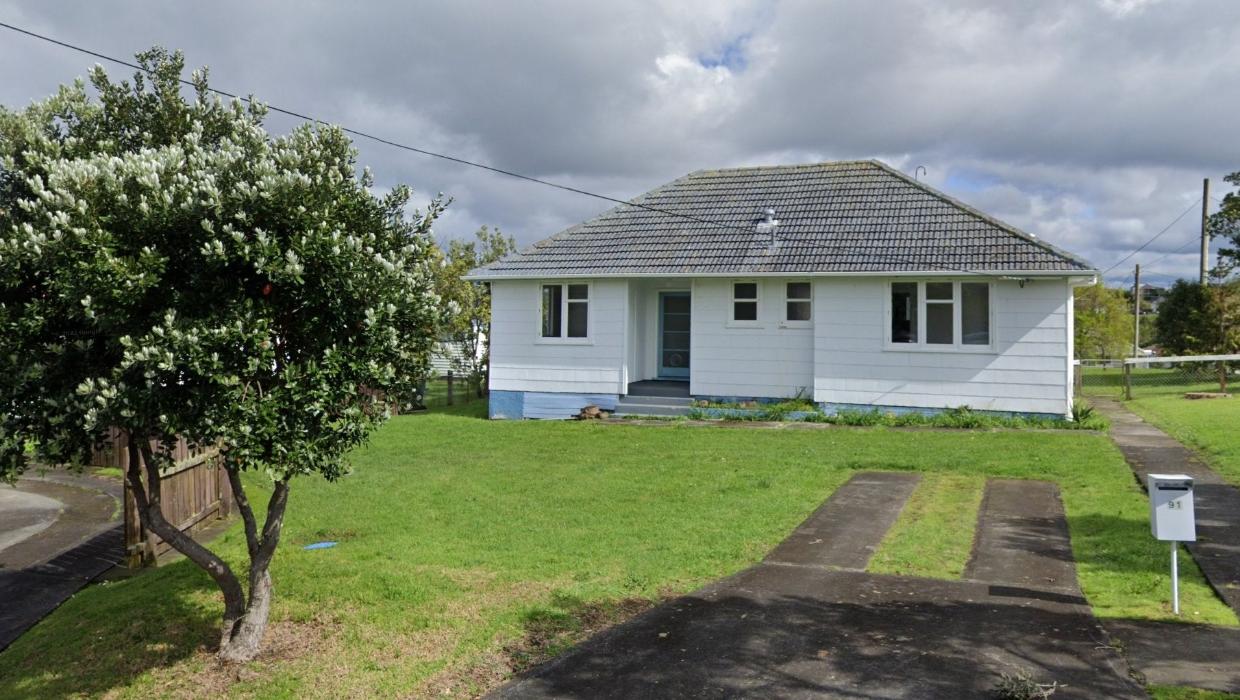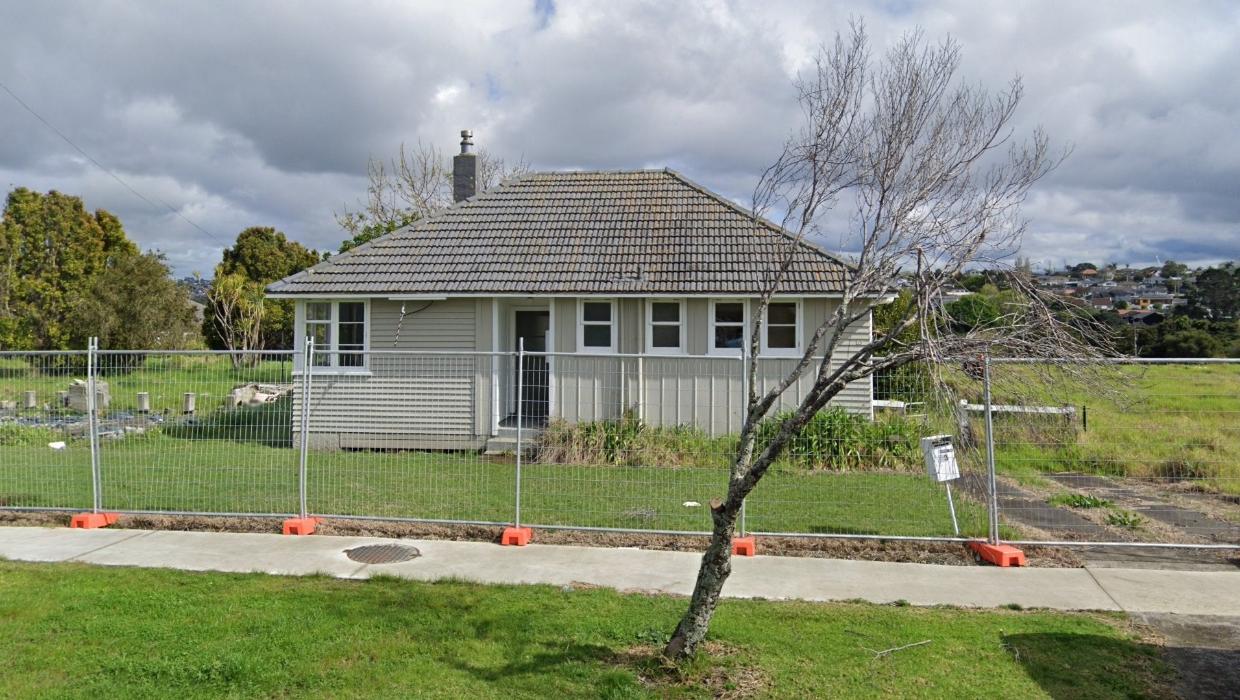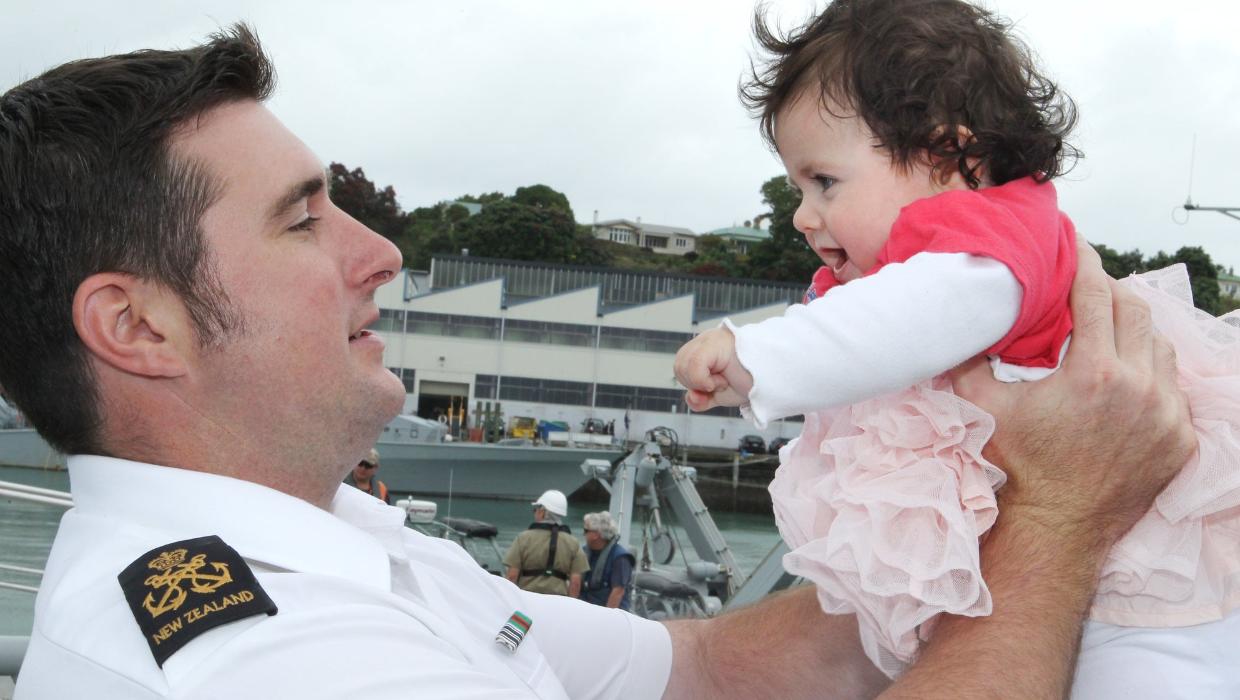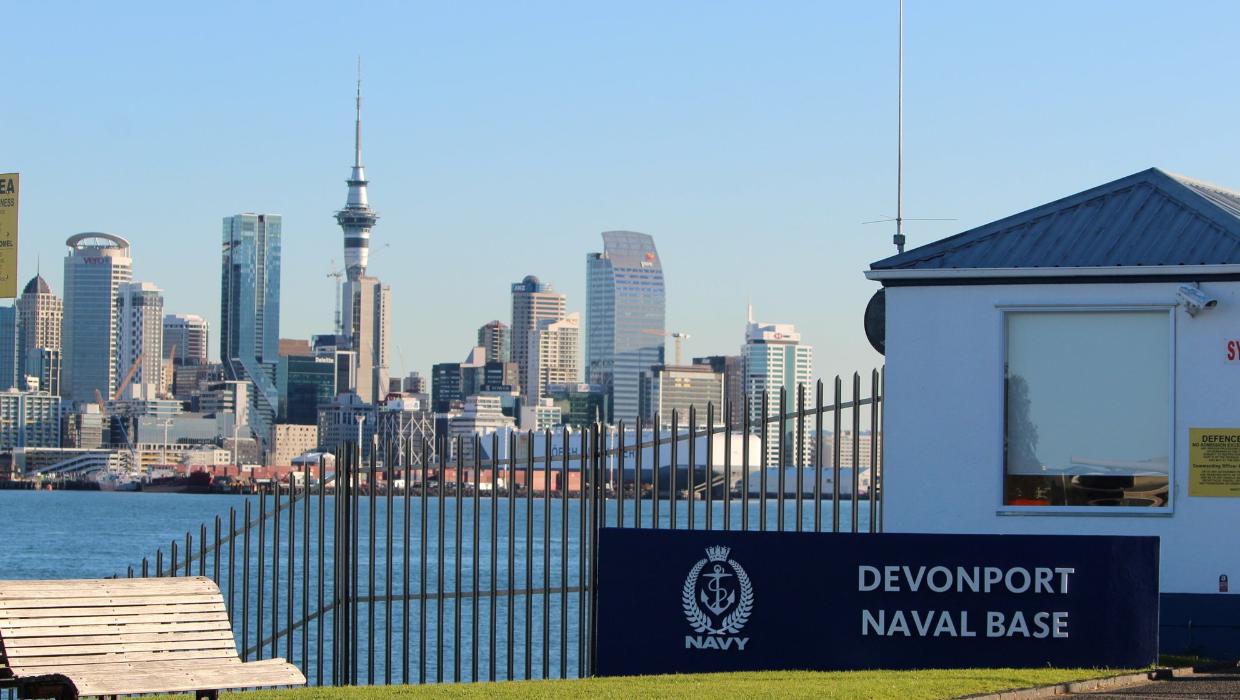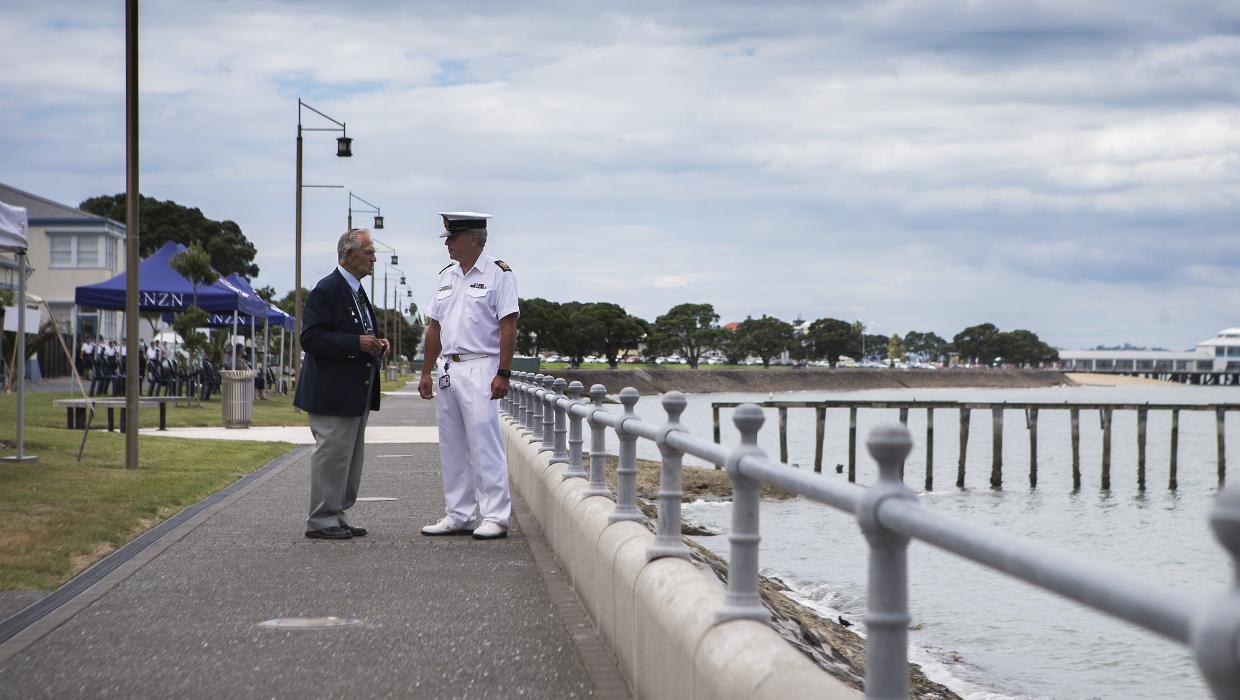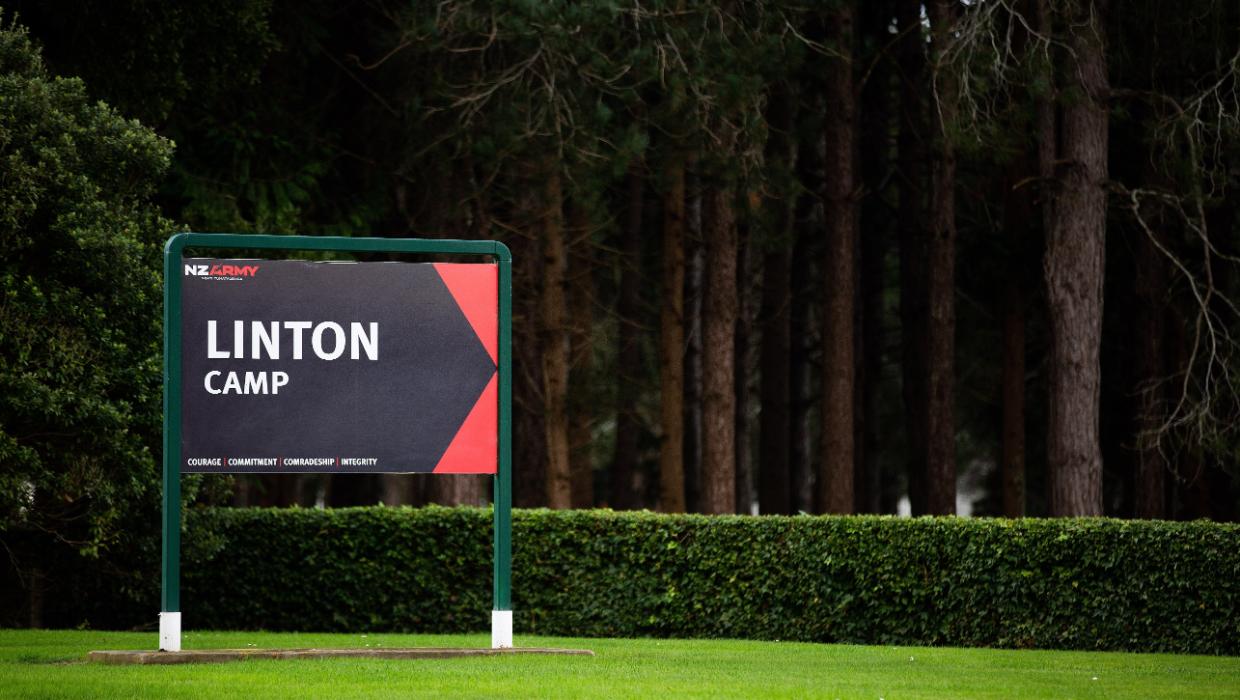John Currin
15 years in Royal New Zealand Navy
RNZN
The home front: Defence Force’s $3 billion housing problem

Jonathan Killick
January 21, 2024, • 05:00am
Share
An example of housing owned by the Defence Force in Devonport.
GOOGLE MAPS / SUPPLIED
New Zealand’s armed services are on the defence in a battle for the home front – with hundreds of government-owned houses that have fallen into disarray.
It’s also a war of attrition. The Defence Force has reportedly lost roughly a third of its uniformed staff in the last three years, which it attributes in part to substandard homes.
In a recent report, it said that while its houses would meet Healthy Homes standards, they would still be “unfit for modern living” without urgent intervention.
It said that military homes – provided for defence personnel and their families – were posing health risks and could cause “housing-related stress”.
The solution, according to the Defence Force, is a $1.011 billion cash injection over 25 years, in addition to $2b from its existing budget. This would yield 1628 “modern quality” homes.
ADVERTISEMENT
ADVERTISEMENT
For this money, 227 new houses would be built, while 877 would be refurbished, and a further 524 would be leased from the private market.
Stuff heard from former and serving defence personnel who spoke about their situations on condition of anonymity.
The Crown has now been obliged to hand over 270 of the navy’s houses to Marutūāhu under a settlement
GOOGLE MAPS / SUPPLIED
“The armed forces are struggling hugely with retention and I think it’s probably at a tipping point, but no one would admit it,” one said.
They said their house was poorly insulated with draughty windows, and running a heat pump to warm it was expensive. It had been cheap rent that had “made the equation work”.
They have a family in navy-owned subsidised housing, living in a four-bedroom house which costs around $320 a week.
It sounds like a great deal, but the reality is more complicated.
Defence’s General Manager of Estate Strategy Phil Gurnsey points out that Defence sets its rents based on the going rate in Manawatū, and in Auckland homes could be up to $350 a week cheaper than the market rate.
ADVERTISEMENT
However, personnel say that has to be put into context of a hard-won pay increase, announced in May. They got an average rise of 30%.
Meanwhile, one defence employee has had a 50% increase in rent compared to three years ago, and was expecting a further 35% increase in April 2024. They said it meant they had effectively had a pay cut.
“I know of single parents who struggle to make ends meet. Even as an officer, they are living pay cheque to pay cheque,” one personnel said.
According to the Government’s careers website, navy officers start on $51,000 and can progress to between $70,000-$84,000 when they reach Ensign level. Lieutenants can earn up to $117,000.
Royal NZ Navy frigate Te Kaha returns to friends and family at Devonport Naval base in 2011. Pictured is Petty Officer Brent Hill with daughter Charlotte. (File image)
PHIL DOYLE / STUFF
Broadly, personnel described how housing had the most impact on the cost of living for young families, which put pressure on mid-career personnel. On this, Defence agrees.
Defence said that it had modelled the future need of houses based on the number of personnel with more than five years but fewer than nine.
“This group are critical to military outputs, have the skills to be fully effective in their role and are known to be at a higher risk of leaving the Defence Force, often due to family reasons.”
ADVERTISEMENT
The problem is perhaps most acutely felt by the navy, which has its primary base of operations at Devonport, one of Auckland’s most expensive and congested suburbs.
The Devonport Naval Base is situated on prime waterfront real estate in Auckland.
CAROLINE WILLIAMS / STUFF
The Crown has now been obliged to hand over 270 of the navy’s houses to Marutūāhu under a settlement, which will leave just 27 homes in the suburb.
It comes as the navy has completed its 32nd report in 26 years on whether it is worthwhile holding onto its base in Devonport and looking at the case for shifting it to Whangārei.
“[It] presents the opportunity to take into account support systems for navy personnel, including improved wellbeing, better work/life balance and improved housing accessibility compared to Auckland.”
It was decided that there would be at least a partial migration, with Defence being instructed to press ahead with a business case for a supplementary training facility in Northland.
The report still found that Devonport had a “superior” deep water channel and a presence should be retained. A full move would cost $945 million more than staying, it said.
There’s another issue. Personnel are only permitted to live in navy-subsidised housing for six years, after which they either have to hope for an extension or find a new home.
ADVERTISEMENT
Ex-naval personnel attend Veterans Day at the naval base in Davenport, Auckland.
CHRIS MCKEEN / STUFF
It’s a numbers game. Defence employs 9600 personnel, 2700 reserves and 3100 civilian staff, and has 1821 houses.
“I’m here because I thoroughly enjoy serving, but if I have to live in the Auckland market on a non-competitive salary, I will take my skills elsewhere and not have to leave my family,” as one put it.
It’s said that most Defence jobs are at least 5% below their civilian equivalent; some as high as 18%.
One personnel told Stuff they had already moved their family north of Auckland in order to afford housing, but this had come with the added cost of petrol.
In the meantime, the Defence Force is changing mode from landlord to tenant. It plans to rent 243 properties near Devonport, 75 in Papakura, 34 in Wellington and increase the number it leases at Whenuapai to 172.
In what appears to be a trial, it has already leased 15 two-bedroom units and seven three-bedroom units in a brand-new development in Northcote.
In its housing pitch, Defence said that the nature of the job was that it had to deploy personnel to various locations and having available housing supported that.
ADVERTISEMENT
“It allows the Defence Force to post personnel where they are needed to deliver military outputs, including locations with high cost of housing or limited housing supply.”
How did our armed forces get to the point of needing billions to prop up its housing?
Rent for Defence Force homes is based on rates for Manawatū, where the army has a large base.
DAVID UNWIN / STUFF
According to the pitch document prepared for former defence minister Andrew Little, most of the stock is over 60 years old and “does not meet modern functionality or is in a marginal physical condition”.
In the last five years, the military had been able to stump up $10.5 million on maintenance of its housing stock.
Gurnsey told Stuff that Defence had gained initial approval from the previous government for the $3 billion programme, dubbed “Homes for Families”.
Now, it is preparing a full implementation business case for the new regime.
Stuff asked newly-appointed Defence Minister Judith Collins whether she intended to oversee its implementation, but received a non-committal response.
ADVERTISEMENT
“This is an operational matter and as such we are happy to leave it with NZDF to comment,” a spokesperson from her office said.
– Stuff
USS YORKTOWN 1944 PUGET SOUND

USS Yorktown (CV/CVA/CVS-10) is one of 24 Essex-class aircraft carriers built during World War II for the United States Navy. Initially to have been named Bonhomme Richard, she was renamed Yorktown while still under construction, after the Yorktown-class aircraft carrier USS Yorktown (CV-5), which was sunk at the Battle of Midway. She is the fourth U.S. Navy ship to bear the name, though the previous ships were named for 1781 Battle of Yorktown. Yorktown was commissioned in April 1943, and participated in several campaigns in the Pacific Theater of Operations, earning 11 battle stars and the Presidential Unit Citation.
Decommissioned shortly after the end of the war, she was modernized and recommissioned in February 1953 as an attack carrier (CVA), and served with distinction during the Korean War. The ship was later modernized again with a canted deck, eventually becoming an anti-submarine carrier (CVS) and served for many years in the Pacific, including duty in the Vietnam War, during which she earned five battle stars. The carrier served as a recovery ship for the December, 1968, Apollo 8 space mission, the first crewed ship to reach and orbit the Moon, and was used in the 1970 film Tora! Tora! Tora!, which recreated the Japanese attack on Pearl Harbor, and in the 1984 science fiction film The Philadelphia Experiment.
Yorktown was decommissioned in 1970 and in 1975 became a museum ship at Patriots Point, Mount Pleasant, South Carolina, where she was designated a National Historic Landmark.
https://en.wikipedia.org/wiki/USS_Yorktown_(CV-10)
HMS Oardacious win World’s Toughest Row and become fastest military team ever
Alex Candlin
17th January 2024 at 1:47pm

A Royal Navy team of submariners have crossed the finish line in first place in the World’s Toughest Row after sailing across 3,000 miles of the Atlantic Ocean in 35 days, four hours and 30 minutes.
HMS Oardacious arrived in Antigua with a significant lead over the remaining 36-boat fleet – and their time also makes them the fastest Oardacious crew to complete the row as well as the fastest military team.
Commander Matthew Main, Commander Daniel Seager, Commander Michael Forrester, Petty Officer Ian Allan and Lieutenant Rob Clarke also became the first team to travel 100 nautical miles in 24 hours during the Talisker Whisky Atlantic Challenge, better known as the World’s Toughest Row.
“Sometimes it seemed like it would never end,” said Cdr Main.
- HMS Oardacious nearing victory in epic 3,000-mile Atlantic row
- HMS Oardacious on course to break record on World’s Toughest Row using new method
- Royal Navy rowing team facing ‘fast and furious’ conditions during World’s Toughest Row
This year was the third time an HMS Oardacious team had taken part in the competition.
Beginning their journey on 13 December, the team set off from San Sebastian de la Gomera in the Canary Islands in their boat Captain Jim, named in memory of a former colleague.
They were unable to beat the world record, but did become the fastest military crew to complete the race and also became the first five-man team to lift the title as the race is typically won by teams of four due to the weight advantage.
Their efforts this year have become a major fundraising initiative for the submarine community.
The team have raised £15,000 since leaving the Canaries, and around £70,000 for the Royal Navy and Royal Marines Charity.
Cdr Main said: “It was pretty challenging. It’s a really long way. I don’t recommend rowing it – fly it!”
He added: “It was amazing. We had a real mixture. We had some really challenging conditions.
“We thought going in challenging weather would make it good for us.
“But overall, it’s been a brilliant experience. It’s demanded a lot of love – and tolerance at times – but these four men are amazing. We made a real bond.
“We had some beautiful times rowing in the moonlight. Racing through the night on big waves. Brilliant fun.”

Scientists confirm arrival of bird flu in Antarctic animals with help from HMS Forth
17th January 2024 at 11:28am

The crew of Royal Navy patrol ship HMS Forth, which has resumed South Atlantic duties after nearly a year away, helped scientists confirm for the first time a highly infectious form of bird flu in Antarctic seals and birds.
The ship transported an expert virologist from the UK’s Animal Plant Health Agency (APHA) to the remote island chain of South Georgia after an unusual number of dead birds were noted in the autumn.
Access to the archipelago, which lies about 800 miles from the Falkland Islands and is barely habited by humans, is only possible by sea as there is no airstrip.
- HMS Forth takes bomb disposal experts to South Georgia on environmental mission
- Penguins of South Georgia get visit from HMS Forth on latest patrol mission in South Atlantic
- Airborne forces go seaborne as Paras join project to retrace Darwin’s historic voyage
HMS Forth ferried the APHA’s Dr Marco Falchieri to the islands and helped him take samples from dead wildlife, notably elephant seals and birds.
At labs back in the UK, the samples were found to prove that the disease – officially known as High Pathogenicity Avian Influenza or HPAI – has reached the fringe of Antarctica, probably carried there by migratory birds.
Although not prevalent yet, it is threatening one of the most fragile ecosystems on the planet.
The virus was found in elephant seals, fur seals, brown skuas, kelp gulls and Antarctic terns but has so far not infected the penguin population.
South Georgia is a British Overseas Territory and part of HMS Forth’s mission, as the Royal Navy’s permanent presence in the South Atlantic, is to regularly patrol the waters.
Forth’s remit is to protect the nation’s interests at sea, whether that means safeguarding fishing stocks in UK waters, or offering reassurance and protection in the Falklands.
The ship also has a flight deck and is armed with an array of weaponry, meaning she can support a range of operations from counter-piracy to anti-smuggling.
Monte Cassino: Remembering the brutal four-month Second World War battle 80 years on
Claire Sadler
17th January 2024 at 9:45am

Watch: Claire Sadler explains why the campaign took four months and four attempts.
The battle of Monte Cassino was a pivotal event in the Italian campaign during the Second World War.
It was one of the bloodiest engagements of the war, and was infamous for its destruction of the monastery.
Monte Cassino eventually resulted in an Allied victory, but it cost 55,000 Allied casualties and the deaths of 2,000 civilians.
- Battle of Monte Cassino: 75th anniversary marked with ceremony
- WW2 veteran sailor, 104, receives perfect birthday gift
- ‘Living legend’ Gurkha veteran celebrates 106th birthday
Why did it take the Allies four months and four attempts to capture it and secure the route to Rome? Claire Sadler’s video above explains.


